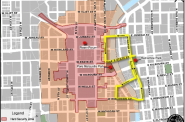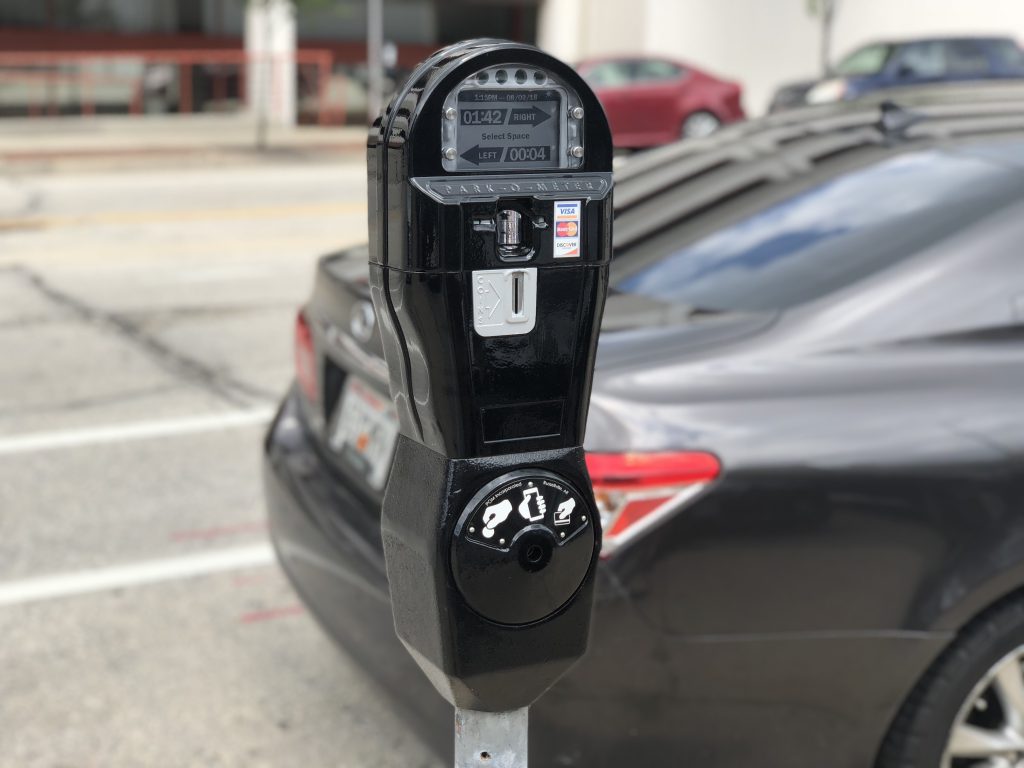Demand-Based Street Parking Coming
City will raise and lower fees based on demand, so more revenue and access to parking.
The City of Milwaukee is poised to drastically change its metered parking policy in a move that will net the revenue-constrained city at least $2 million annually. It should also lead to cheaper parking in low-demand areas, and higher rates for in-demand spaces — and make it a little easier to find a parking space.
The Common Council has already approved new meters and the city has begun installing them. Now, the Department of Public Works, which administers the city’s 7,076 metered spaces, is recommending a three-tier change to the city’s approach to metered parking.
The first step is to increase the three hourly base rates from $0.50, $1.00 and $1.50 to $0.75, $1.25 and $2.00. That change alone will net the city $1.9 million annually based on 2016 data says a DPW report.
The rate increase will be coupled with a subtle change the will extend the amount of time the standard metered rates are enforced. DPW Parking Services Manager Thomas Woznick told the Common Council’s Public Safety and Health Committee that the city will expand the Monday-through-Friday window of 8 a.m to 6 p.m. by three hours, enforcing the meters until 9:00 p.m.
But while “demand-responsive pricing” could simply be interpreted as a way to collect more money from drivers, the strategy as described by DPW and a national parking expert should actually result in some drivers paying less for parking.
What is the right price for parking? UCLA professor Donald Shoup has written the seminal book on the matter. In the “High Cost of Free Parking” Shoup explains that street parking should be ideally priced to create an 85 percent occupancy rate, otherwise, a tragedy of the commons occurs, with people circling the block endlessly creating congestion and businesses losing customers because of perceived difficulties in getting to them.
At the 85 percent rate, at least one available space could be found on every block and the scarce resource, road space, would be maximizing revenue that could then be invested in the community. Shoup suggests that rates can vary by time of day, day of the week and block by block. When there are too many cars, the price goes up, when too few, the price goes down to as low as zero.
The practice has been adopted most prominently in San Francisco, which uses an 80 percent standard and adjusts prices on a per-block basis. Prices can change up to three times a day. Additionally, cities like New York, Los Angeles, Seattle and Washington D.C. have instituted some portion of Shoup’s methodology.
Milwaukee is now poised to join the fray. The new meters will allow the city to collect what it describes as “real-time data” and adjust the parking prices.
A report produced by DPW details the proposed dynamic rates.
- When average occupancy is between 80‐100 percent, the hourly rate will be increased by $0.25
- When average occupancy is between 60‐80 percent, the hourly rate will not be changed
- When average occupancy is between 30‐60 percent, the hourly rate will be lowered by $0.25
- When average occupancy is less than 30 percent, the hourly rate may be further reduced by $0.25 increments or lifted entirely
These figures can be adjusted over time. The report states: “Adjustment of rates would be designated at a frequency, such as quarterly, semi‐annual and/or event basis to help achieve the target occupancy rate of 60‐80% within a defined area and/or price range.” The ordinance does not specify an interval.
The city collects approximately $5 million in meter revenue annually.
The department’s proposal received unanimous approval from the Public Safety and Health Committee Thursday morning. It will next go before the full Common Council.
Why Parking Revenue Matters for Milwaukee
Beyond making it easier to find a place to park, the increased revenue also solves another looming issue for the city.
The Hop, Milwaukee’s soon-to-launch streetcar system, is planned to use parking revenues to help fund its operations. The increased revenues to the fund will not only pay for the streetcar and the $3.5 million cost of the new meters, but will also allow the city to continue to use the $47 million parking fund to support other city operations.
The 2018 budget includes the city transferring $17.1 million of parking-related revenues to the general fund, a practice that dates back decades and is now critical for the revenue-constrained city.
Revenue comes not just from meters and city-owned garages and lots, but towing ($4 million), permits ($4.6 million) and citations ($16 million). Operations and maintenance are budgeted at $27.2 million for 2018.
If you think stories like this are important, become a member of Urban Milwaukee and help support real independent journalism. Plus you get some cool added benefits, all detailed here.
City Hall
-
Attempt To Expand Disorderly Conduct Fine, Ban Bump Stocks Before RNC Fails
 Jul 11th, 2024 by Jeramey Jannene
Jul 11th, 2024 by Jeramey Jannene
-
Despite Losing Lawsuit, Coalition To March on RNC Will Proceed Without Permit
 Jul 9th, 2024 by Graham Kilmer
Jul 9th, 2024 by Graham Kilmer
-
Council Wants State to Ban Bump Stocks
 Jul 4th, 2024 by Jeramey Jannene
Jul 4th, 2024 by Jeramey Jannene
Transportation
-
MCTS Adds 28 New Buses
 Jul 13th, 2024 by Graham Kilmer
Jul 13th, 2024 by Graham Kilmer
-
MCTS Designing New Bus Shelters
 Jul 10th, 2024 by Graham Kilmer
Jul 10th, 2024 by Graham Kilmer
-
MCTS Updates RNC Bus Detours To Better Serve Downtown, Riders
 Jul 9th, 2024 by Jeramey Jannene
Jul 9th, 2024 by Jeramey Jannene




















Who enforces the extra three hours of parking and how does that expense (parking checkers aren’t volunteers) fit into this? How will this effect street repair funds? Could an additional $.25 increase per hour be put into a special “pot hole” fund? And as one who finally figured out how to make his “parking app” work, it’s good to know that high tech meters will be everywhere!!
Until now, it’s been great parking downtown for free after 6pm since most paid parking meter hours ended at that time. Sounds like the City will change all those meters to 9pm. Too bad. Though I generally favor public transit, I have to admit that as I get older I take the car everywhere. Milwaukee is not New York, Chicago, Boston or San Francisco. One of the great things about our city is its low cost/free and usually available on-the-street downtown parking. I also find the notion that circling the blocks looking for a parking spot adds to congestion and fewer customers for businesses may be true for larger more congested cities, but it isn’t the case here.
Any effort to increase rates for automobiles thus discourage automobiles is a plus in my mind. Now considering George Wagner’s comments, can we have a senior code/category as for bus passes? Technology seems to be able to accomplish many tasks. Could this happen?